Thursday 27th July 2017 will probably be a fairly quiet day here at the University of Liverpool. The excitement of the previous week’s graduation ceremonies will have dissipated, and many will be looking forward to a relaxing summer. However, Thursday 27th July 2017 also marks the 50th Anniversary of when The Sexual Offenses Act 1967 came into effect in England and Wales, legalising same-sex relationships between men (lesbian relationships were not illegal).
In 1957 the ‘Committee on Homosexual Offences and Prostitution’ published the Wolfenden Report, which recommended that male homosexuality should be decriminalised. However, it took another 10 years of public debate and parliamentary discussion until the Sexual Offenses Act was officially passed. This decriminalisation was limited in scope, as it only applied if there were two participants aged 21 or over, and the act took place in private. Failure to comply with these rules could potentially result in 2-5 years imprisonment.
Since then a lot of things have changed. Laws have been repealed, and new legal rights created, and social attitudes towards gay people have been transformed.
Back in 2011, we here at the Diversity and Equality team decided to research if, how, and when the issues of ‘homosexuals’ had come up here at Liverpool University. When I was a student in the early 00’s, I had friends here at Liverpool who were active in the ‘Lesbian, Gay, Bisexual & Trans Committee’ in the Guild. We went on lobbies of parliament and NUS LGB Conferences, they ran campaigns and lobbied for new Guild Policies on LGBT issues. So, I knew at least that there was some activity going on from the early 2000’s to today.
So I took myself off to Special Collections and Archives in the Sydney Jones Library to see what they had, I spoke to the Guild and went through old minute books, and I even went through my own archive in case there was anything of use.
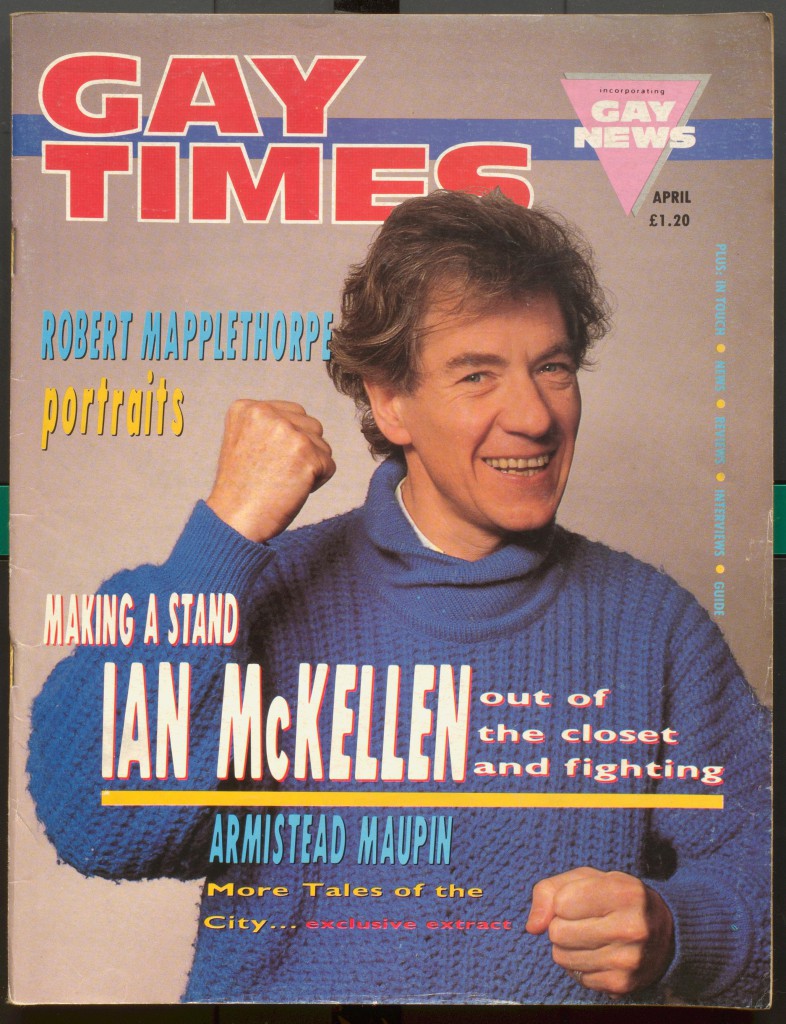
The outcome of all of this was an exhibition which I called Pink Brick [a play on Red Brick]: LGBT Histories of the University of Liverpool, in the Victoria Gallery and Museum. A website was also developed to archive the exhibition materials and make available some of the references used. This is still a project in development, and each LGBT History Month we make sure that at least some of it is updated.
So, what did we find in Special Collections and Archives in relation to Liverpool University?
The earliest reference to ‘homosexuals’ I came across was an article in the Guild Gazette newspaper, whereby the columnist ‘Cornus’ undertakes some investigative journalism to find out what the ‘homosexual victims’ think about the idea of decriminalisation:
“Should homosexuality be made lawful? Do we heed the plaintive calls of O- W- [Oscar Wilde] and other cultured sodomites or do we maintain our steadfast disgust and intolerance against such practices?
This was 27th November 1961, the same year the Beatles first performed in the Cavern, the Runcorn Bridge was opened, and the pill becomes available on the NHS (Guild Gazette, Tuesday 27th November 1961, reference R/LF379.5.G95.U55).
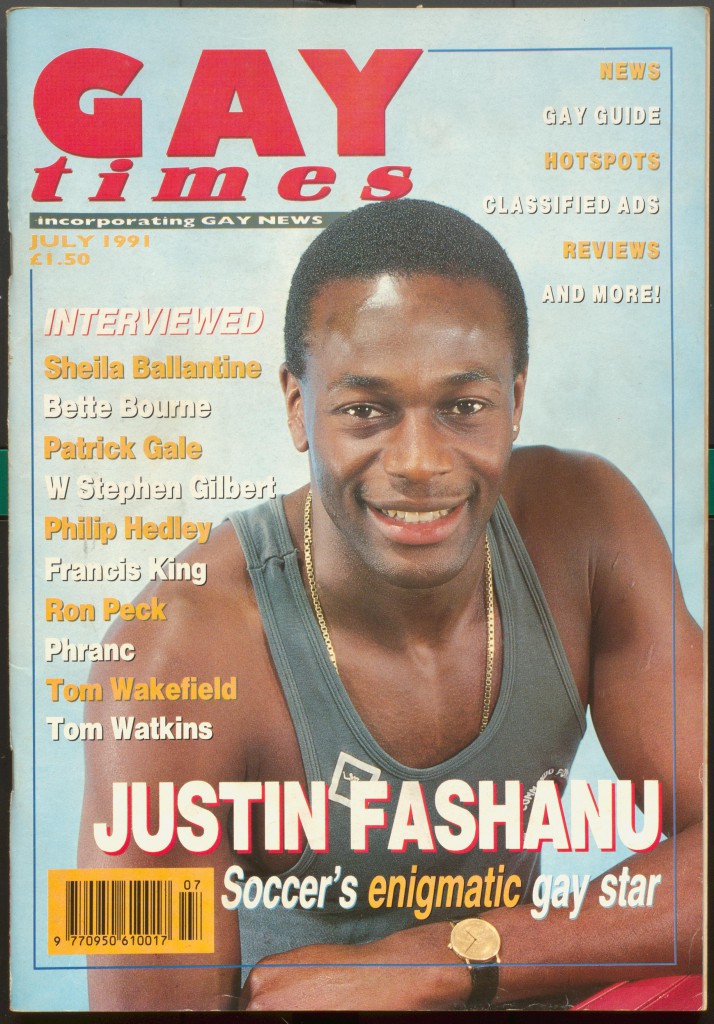
In 1971 a group of students who were members of the Liverpool Campaign for Homosexual Equality (C.H.E) group floated the idea of setting up a student society. They had their first stall at the 1971 Fresher’s Fair, and on the 15th May 1972 the Guild Council formally approved the establishment of the ‘Homophile Society’, what is now called the LGBT Society. In the 1980s the Liverpool University GaySoc often held discussion groups regarding prominent LGBT issues, which are as significant to LGBT+ people today as they were back then.
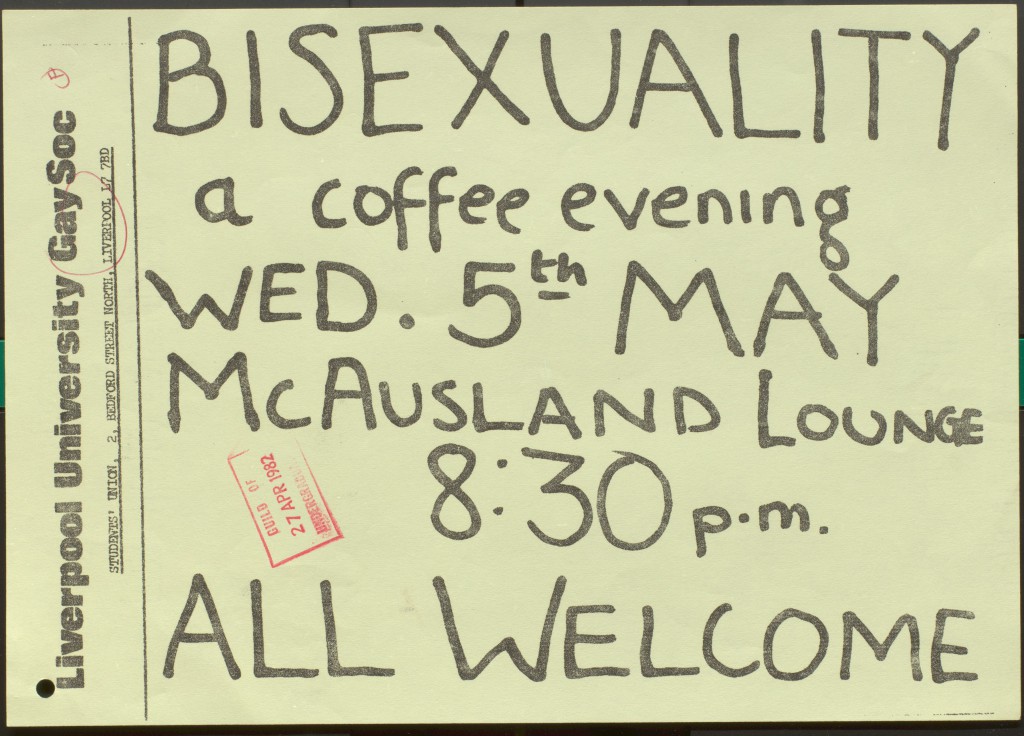
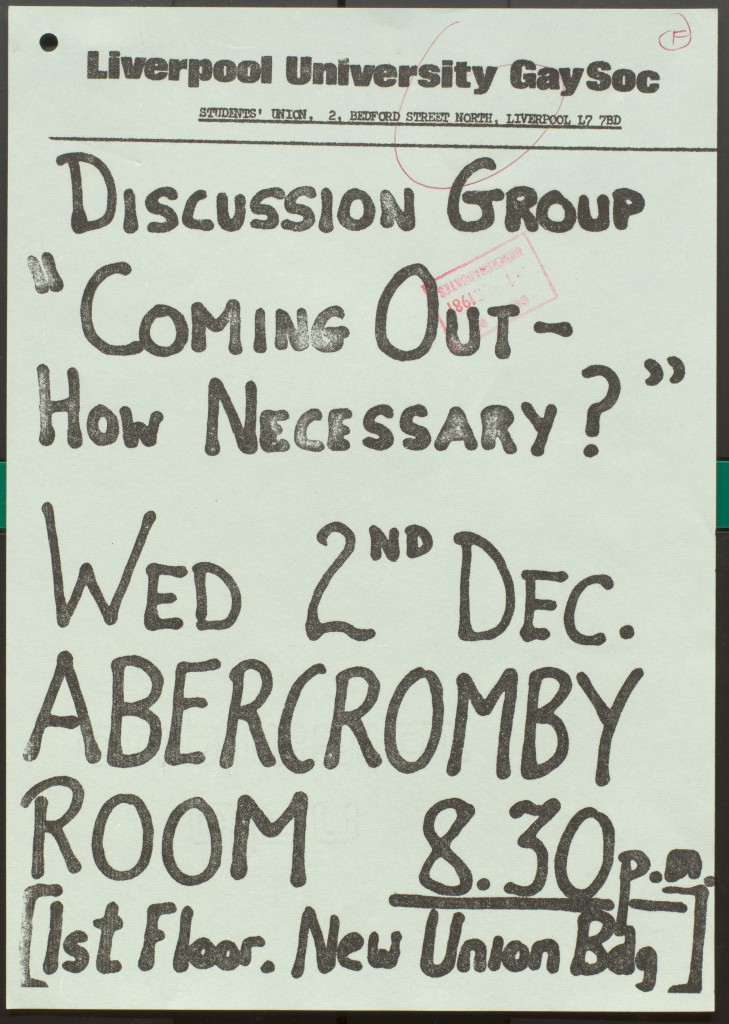
Nationally, the NUS passed the first comprehensive motion on gay rights in April 1973 [‘NUS Supports Gay Rights at Exeter Conference’ Guild Gazette, 8th May, 1973] , and held the first ever Gay Rights Conference in October of the same year [‘What they said at the Gay Lib Conference’ Guild Gazette, 31st October 1973]. The NUS continued to hold events, such as the “N.U.S Gay Rights Campaign National Week of Action”, as shown in the below flyer created by the Liverpool University GaySoc.
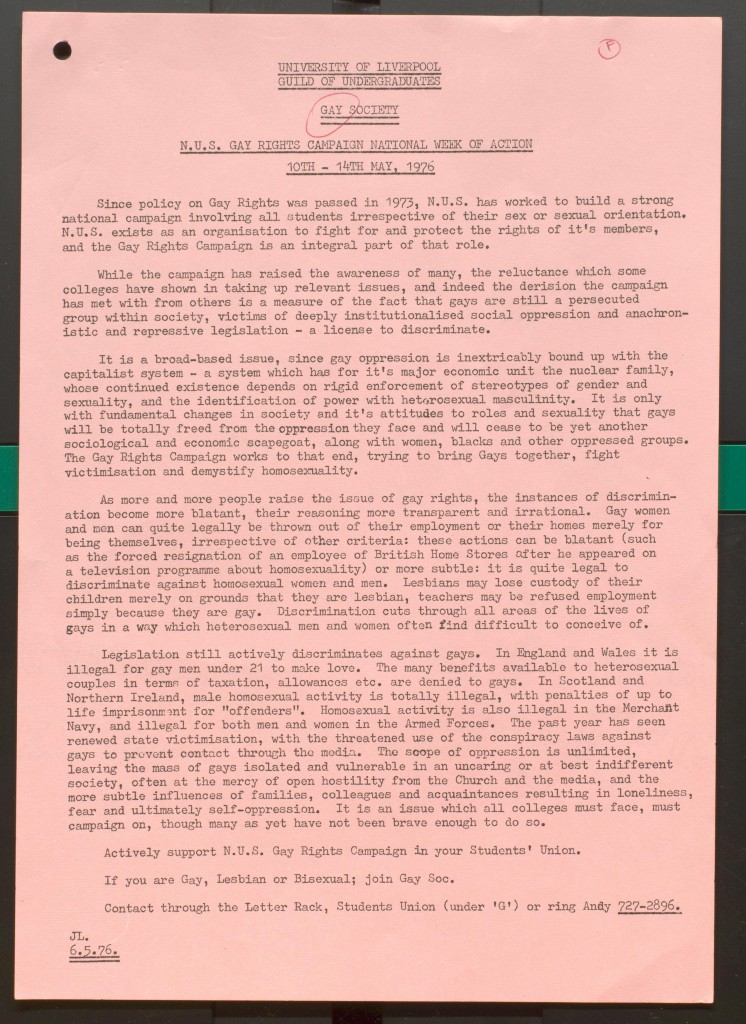
Also held at Special Collections and Archives, the David Owen archive also provides an insight into the support for Gay rights from the SDP party in the 1980s. Below is the Gay Social Democrat, marketed as the “official journal of Social Democrats for gay rights”, and published as a quarterly newsletter.
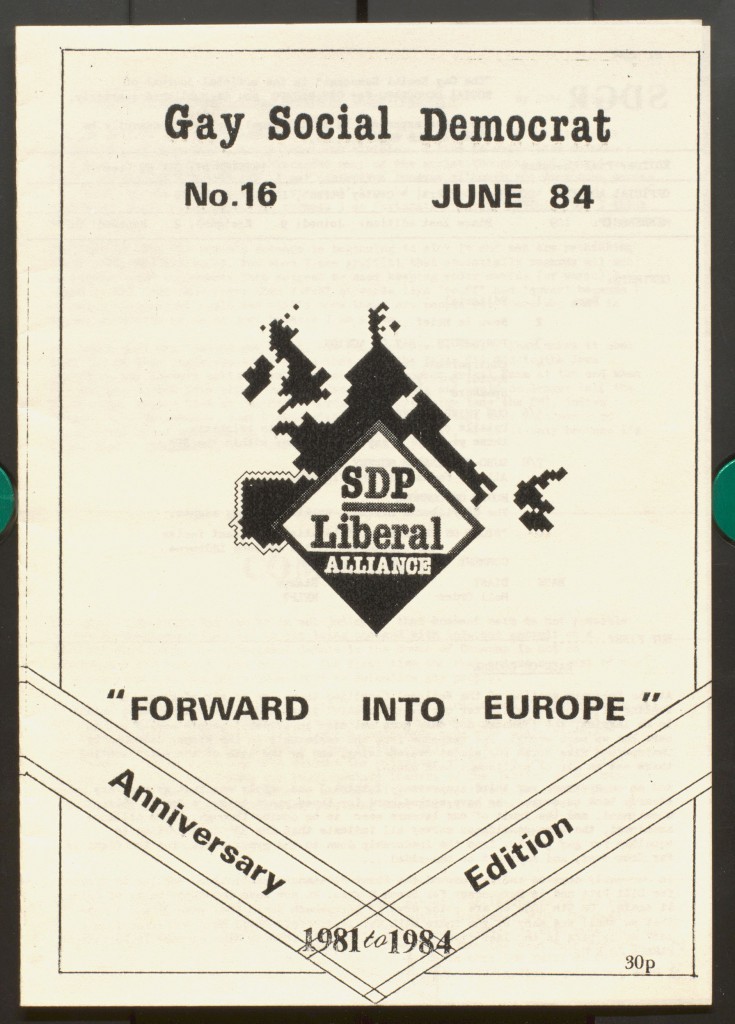
As a personally strong advocate for gay rights, Lord Owen is here outlining in the Gay Times the principles of the Liberal party, which will uphold legal rulings to support gay rights and focus on eliminating social stigma.
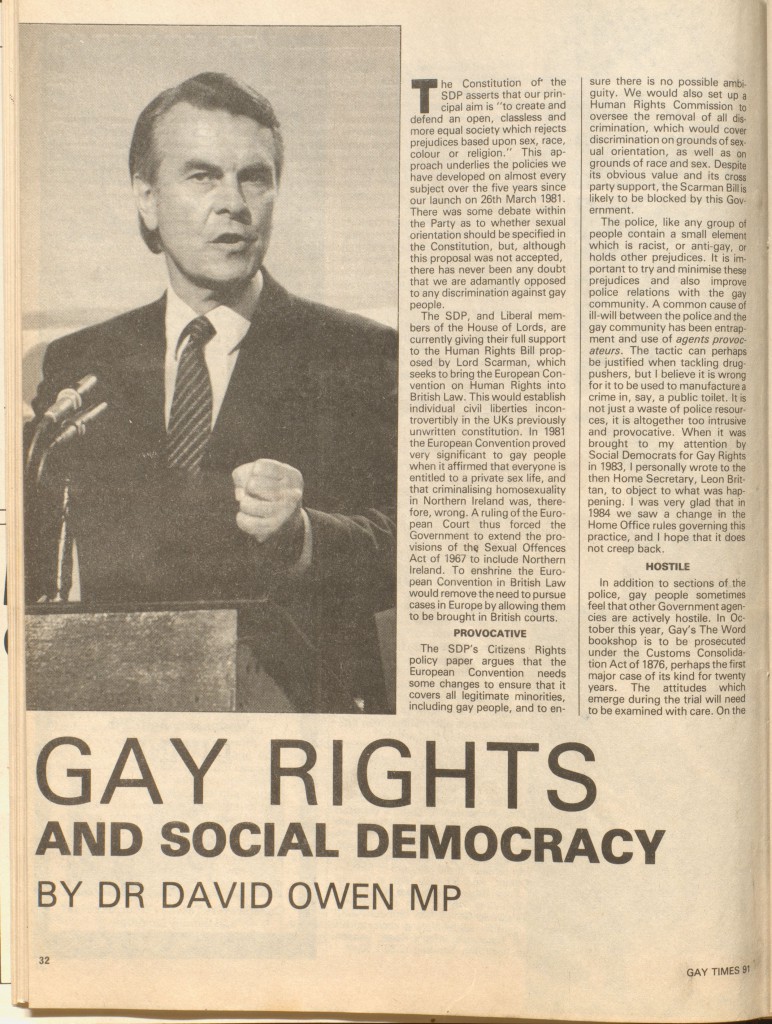
Since 2000, we have seen the ban on LGBT people in the military lifted, the age of consent reduced to match that of straight people, employment protections introduced, the right to marry, the right to legal transition, and the right to adopt introduced.
Darren Mooney is the Equality and Diversity Officer at Liverpool University.
You can explore some of the items referenced in this post further on the LGBT Histories of the University of Liverpool project website. As always, the items featured in this post that are referenced as Special Collections and Archives are available to view in our reading room, Sydney Jones Library.